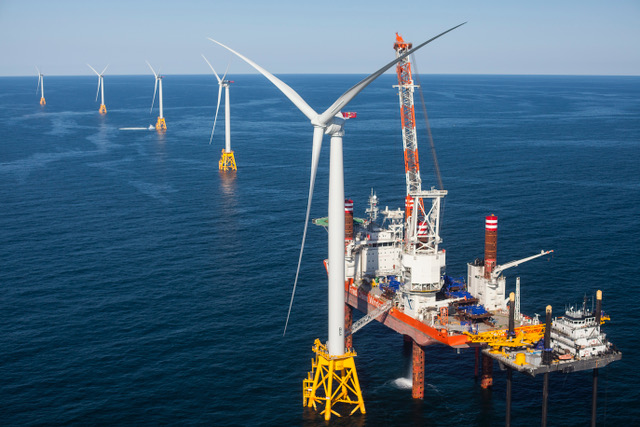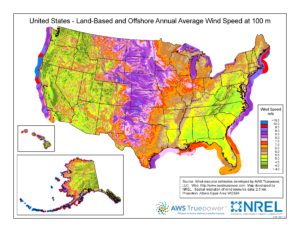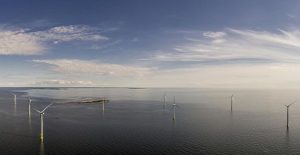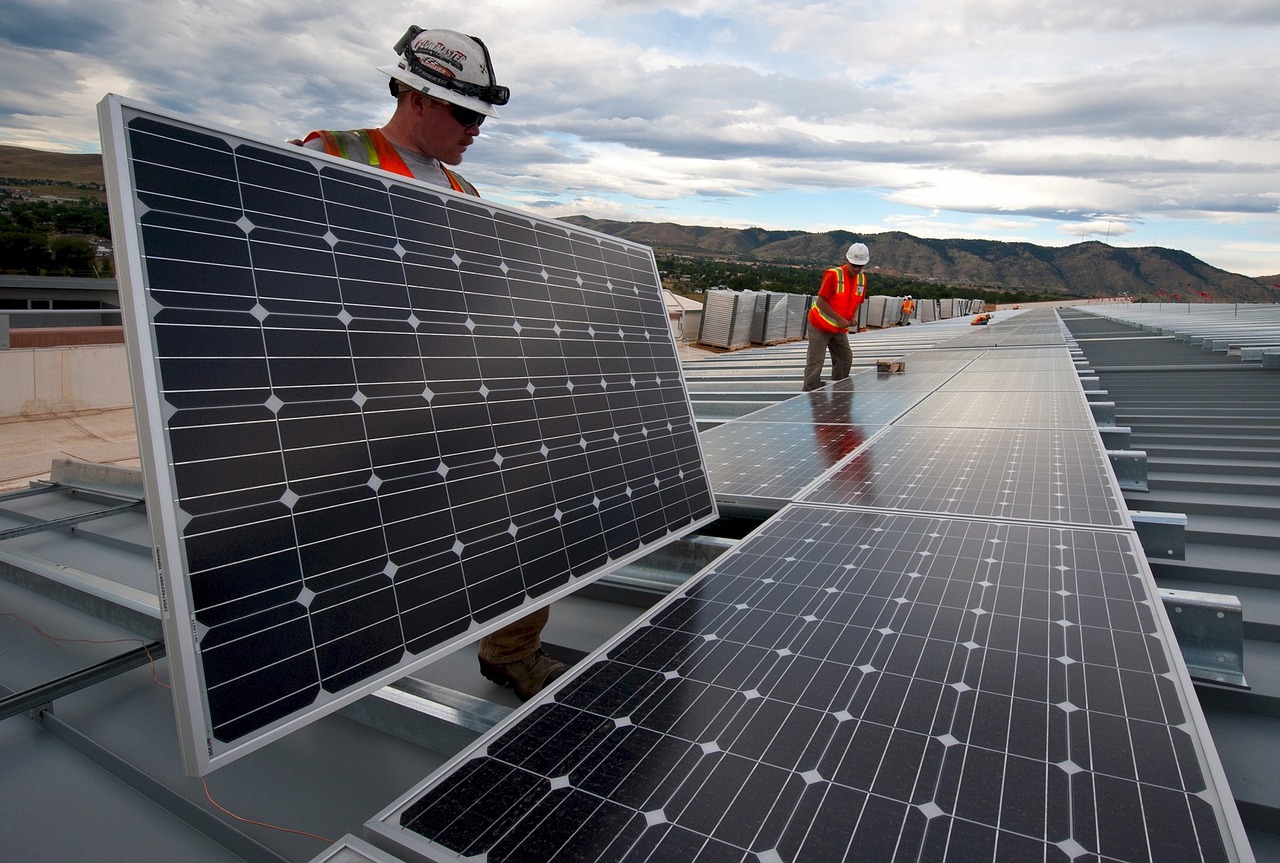
Offshore wind energy is gaining momentum in the U.S. renewable energy market. The ability to build large wind farms without having to navigate private land issues and the cost of purchasing or leasing property makes offshore development an appealing alternative to traditional wind projects. Additionally, offshore wind power is one of the most efficient power sources due to higher year-round wind speeds in coastal areas and because offshore wind turbines tend to be larger than onshore versions. European nations have embraced offshore wind for nearly three decades (the first offshore wind farm was built in Denmark in 1991), with the UK and Germany leading in total installed capacity.
 Most of the current offshore development in the U.S. is focused off the Atlantic coast to address the high energy loads of that region, stemming from heavy population density along the east coast. The Great Lakes, however, offer a promising and underutilized option in the energy field. With roughly 10% of the U.S. population, over 30% of the Canadian population, and six major metropolitan areas (including Toronto, Chicago, Detroit, Milwaukee, Cleveland, and Buffalo), the Great Lakes basin represents a major opportunity. Additionally, freshwater has some unique advantages over ocean conditions – shallow depth, smaller waves, no hurricanes, and electrical grids closer to shore.
Most of the current offshore development in the U.S. is focused off the Atlantic coast to address the high energy loads of that region, stemming from heavy population density along the east coast. The Great Lakes, however, offer a promising and underutilized option in the energy field. With roughly 10% of the U.S. population, over 30% of the Canadian population, and six major metropolitan areas (including Toronto, Chicago, Detroit, Milwaukee, Cleveland, and Buffalo), the Great Lakes basin represents a major opportunity. Additionally, freshwater has some unique advantages over ocean conditions – shallow depth, smaller waves, no hurricanes, and electrical grids closer to shore.
Carefully assessed opportunity. A 2010 report by the Michigan Great Lakes Wind Council (commissioned by then-Governor Jennifer Granholm) identified over 13,000 square miles of lake bottomlands as “most favorable” to wind energy development. The council went further and identified five “priority areas” across Lakes Michigan, Huron, and Superior that offer optimal conditions and do not interfere with commercial fishing, wildlife habitat, or shipping lanes. The report stems from a 2009 proposal by Scandia Wind to develop an offshore wind farm off the west coast of Michigan.
An exciting project in the works. LEEDCo recently received approval from the Ohio Environmental Protection Agency for a pilot wind farm off the coast of Cleveland, Ohio. The design is aimed to combat the largest engineering obstacle for freshwater wind development – ice. This project includes six wind turbines outfitted with ice-breaking features on their poles. LEEDCo consulted with multiple European firms that are successfully operating freshwater wind farms and could begin construction as soon as next year. LEEDCo worked closely with Ohio’s environmental community to craft a proposal that mitigates the impact of the wind farm to bird and bat migration. By working with a broad constituency early in the project, LEEDCo was able to gain wide support for the project. While this is a small project in comparison to much of the ocean-based wind farm proposals, it demonstrates the possibilities for greater wind power investment across the Great Lakes.

Tahkoluoto, the world’s first offshore wind farm in icy conditions opened in August 2017 in Finland.

